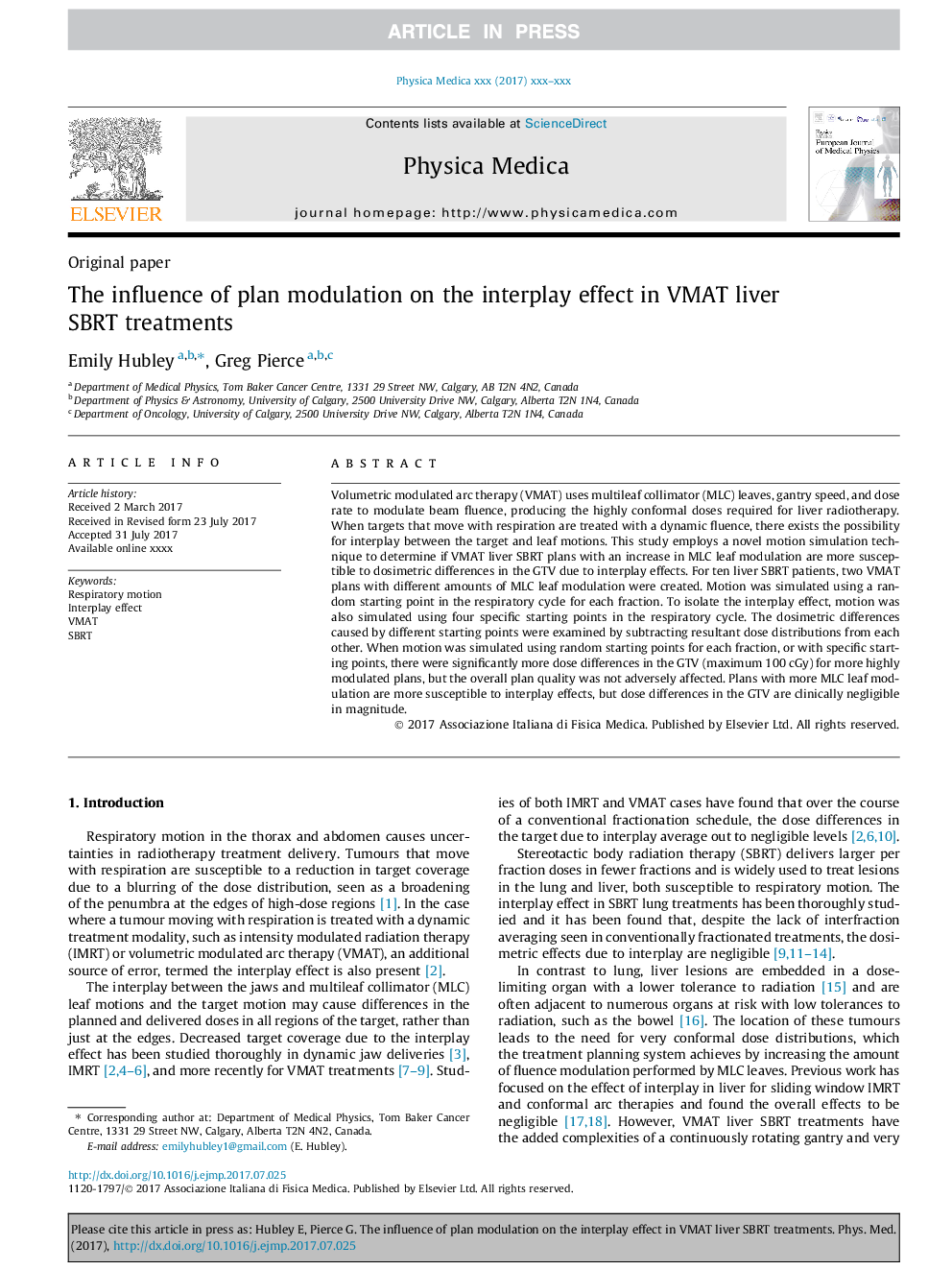| Article ID | Journal | Published Year | Pages | File Type |
|---|---|---|---|---|
| 5498294 | Physica Medica | 2017 | 7 Pages |
Abstract
Volumetric modulated arc therapy (VMAT) uses multileaf collimator (MLC) leaves, gantry speed, and dose rate to modulate beam fluence, producing the highly conformal doses required for liver radiotherapy. When targets that move with respiration are treated with a dynamic fluence, there exists the possibility for interplay between the target and leaf motions. This study employs a novel motion simulation technique to determine if VMAT liver SBRT plans with an increase in MLC leaf modulation are more susceptible to dosimetric differences in the GTV due to interplay effects. For ten liver SBRT patients, two VMAT plans with different amounts of MLC leaf modulation were created. Motion was simulated using a random starting point in the respiratory cycle for each fraction. To isolate the interplay effect, motion was also simulated using four specific starting points in the respiratory cycle. The dosimetric differences caused by different starting points were examined by subtracting resultant dose distributions from each other. When motion was simulated using random starting points for each fraction, or with specific starting points, there were significantly more dose differences in the GTV (maximum 100Â cGy) for more highly modulated plans, but the overall plan quality was not adversely affected. Plans with more MLC leaf modulation are more susceptible to interplay effects, but dose differences in the GTV are clinically negligible in magnitude.
Related Topics
Physical Sciences and Engineering
Physics and Astronomy
Radiation
Authors
Emily Hubley, Greg Pierce,
